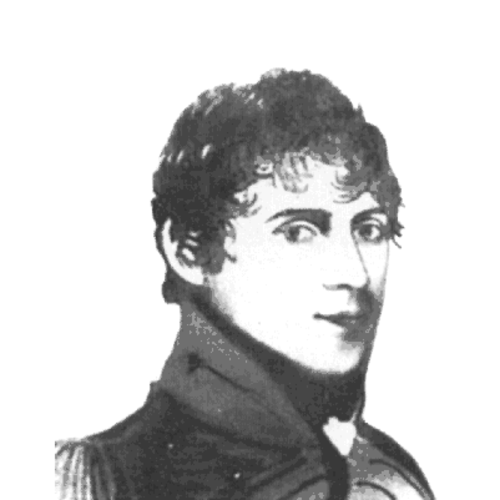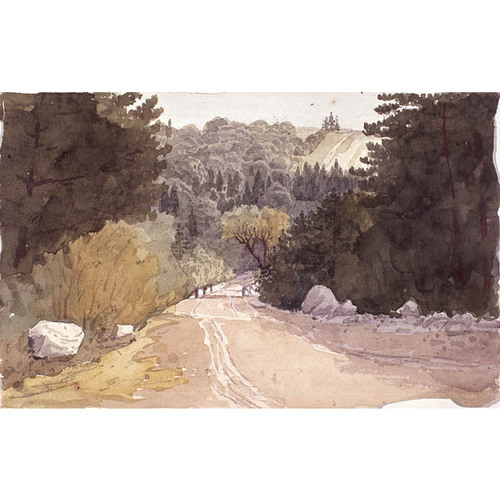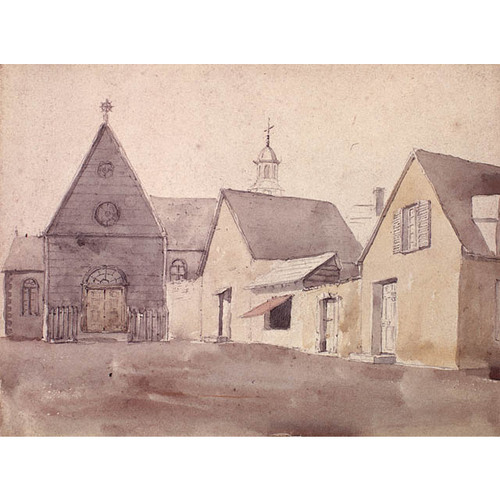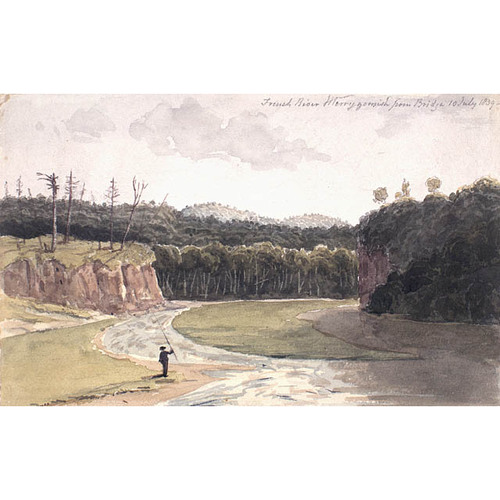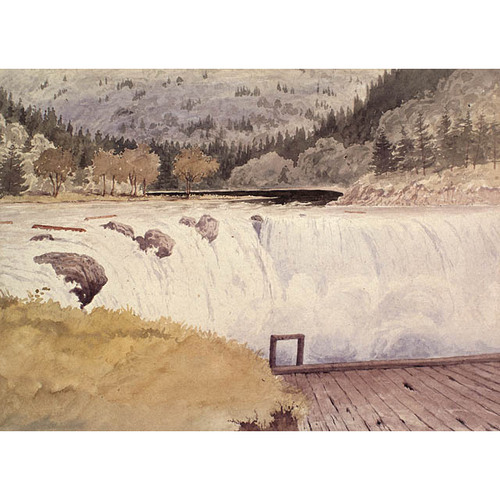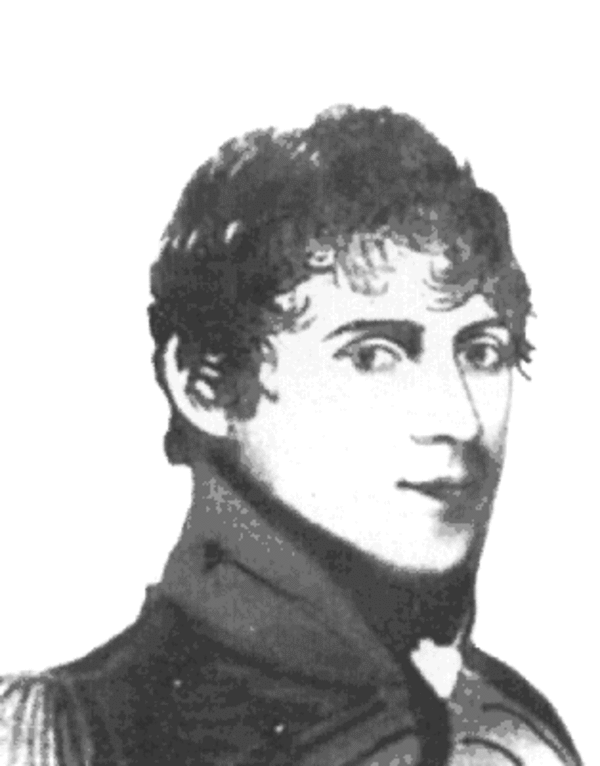
Source: Courtesy of Wikimedia Commons
MERCER, ALEXANDER CAVALIÉ, soldier and artist; b. 28 March 1783 at Hull, Yorkshire, England, son of General Alexander Mercer, Royal Engineer, and Miss Dickson; m. 10 Oct. 1813 Frasquita (Fanny) Rice, and they had one son; d. 9 Nov. 1868 at Exeter, England.
Alexander Cavalié Mercer’s early education took place in a variety of undistinguished private schools; these did not prepare him adequately to pass initially the entrance examinations for the Royal Military Academy at Woolwich, England, though he was eventually admitted. Upon graduating he took a commission as 2nd lieutenant in the Royal Artillery in 1799 because he “hardly looked upon Engineers as soldiers; and . . . [he] wanted to be a soldier.” Promoted 1st lieutenant in 1801, Mercer served in the Cork district of Ireland between 1801 and 1805, to help keep order after the union of Ireland with Britain. During this time he suffered from ophthalmia. After spending the next two years at Woolwich, Northfleet, and Christchurch in England, he was ordered to South America where he participated in Lieutenant-General John Whitelocke’s unsuccessful expedition to seize Buenos Aires for the British. By now a captain, Mercer was back in England by the end of 1808 where he remained until ordered to the Continent in 1815 as part of the Duke of Wellington’s army; he fought at Quatre Bras and Waterloo. In the absence of Sir Alexander Dickson, the youthful officer was given command of G troop of the Royal Horse Artillery. During the battle of Waterloo he disobeyed Wellington’s orders, and although the results were fortunate Mercer was disciplined. Reduced to half pay on 31 July 1816 he was forced to wait until 1821 to be reinstated to full pay; he nonetheless received the Waterloo medal, presented to all British officers who participated in Napoleon’s defeat.
A careful observer, Mercer was considered by his son to be “a very good amateur artist” and it was this ability that he drew upon when writing about his experience in the Waterloo campaign; his journal, published posthumously in 1870 by his son, is an excellent description of the Lowlands and the Netherlands as the English found them in 1815, but it records only that portion of the battle which immediately affected Mercer.
Upon reinstatement Mercer was sent to Lower Canada in command of the 6th company of the 5th battalion of the Royal Artillery at Quebec; he arrived in Canada on board the William Harris on 7 July 1823. During this posting Mercer spent time at Quebec and Île Sainte-Hélène, and, using Kingston, Upper Canada, as a base, was a member of a board to survey the ordnance supplies in Upper Canada in 1824. Away from Canada during a long leave of absence from 1825 to 1827, Mercer again left the colony for England in 1829 and took up postings at Woolwich and then Devonport. On 22 Oct. 1837 Mercer, now a lieutenant-colonel, returned to British North America to command the artillery in Nova Scotia and remained at Halifax until 16 Aug. 1842. He made extensive tours of inspection throughout the Maritimes, and left an important water-colour record of many of the places he visited, especially Halifax and the surrounding region and Fredericton and the Saint John River valley. Although his paintings are now faded, he appears to have been one of the most original artists of the group of military topographers who documented the colonial landscape. The largest collection of his water-colours is preserved in the Public Archives of Canada.
In 1842 Mercer returned to England and a posting at Dover. He was promoted colonel in 1846, major-general in 1854, lieutenant-general in 1857, colonel-commandant in 1859, and general in 1865. He then left active service. He remained colonel-commandant of the 9th brigade of the Royal Artillery until his death.
PAC, RG 8, I (C series), 747, pp.151–52, 154. PANS, MG 12, HQ 31, p.119. PRO, WO 17/1527–33, 17/2384–89 (mfm. at PAC); WO 76/360. Royal Artillery Institution (Woolwich, Eng.), General A. C. Mercer papers, diary, 1786–1815. [A. C. Mercer], Journal of the Waterloo campaign kept throughout the campaign of 1815, ed. C. A. Mercer (2v., Edinburgh and London, 1870). Battery records of the Royal Artillery, 1716–1859, comp. M. E. S. Laws (Woolwich, Eng., 1952). Hart’s army list, 1868. Francis Duncan, History of the Royal Regiment of Artillery (2v., London, 1872–73).
Cite This Article
M. Bell, “MERCER, ALEXANDER CAVALIÉ,” in Dictionary of Canadian Biography, vol. 9, University of Toronto/Université Laval, 2003–, accessed January 18, 2026, https://www.biographi.ca/en/bio/mercer_alexander_cavalie_9E.html.
The citation above shows the format for footnotes and endnotes according to the Chicago manual of style (16th edition). Information to be used in other citation formats:
| Permalink: | https://www.biographi.ca/en/bio/mercer_alexander_cavalie_9E.html |
| Author of Article: | M. Bell |
| Title of Article: | MERCER, ALEXANDER CAVALIÉ |
| Publication Name: | Dictionary of Canadian Biography, vol. 9 |
| Publisher: | University of Toronto/Université Laval |
| Year of publication: | 1976 |
| Year of revision: | 1976 |
| Access Date: | January 18, 2026 |


